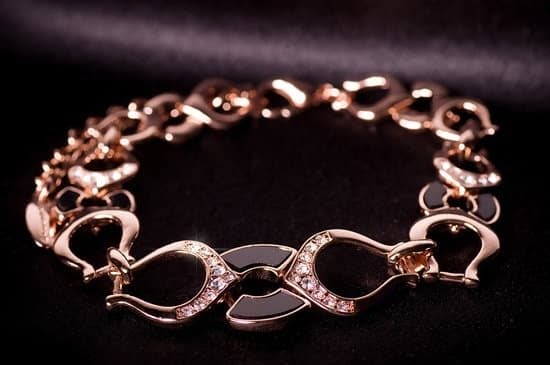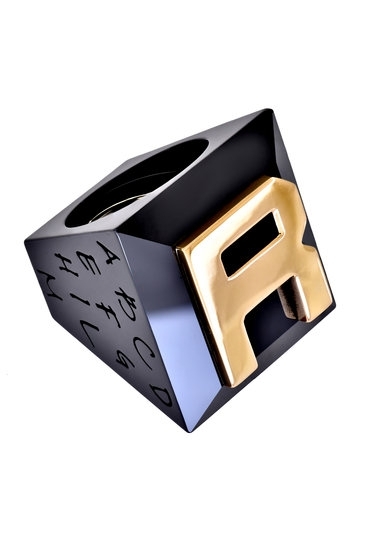Metal purity marks on jewelry are essential indicators in assessing the quality of a metal. These markings are essentially small imprints on the item in question, which indicate what type of material it is. From vintage pieces to modern creations, almost all metals used to make jewelry will carry at least one mark, while precious metals like gold and silver may have several marks engraved onto them.
Metal purity markings give us an insight into several essential factors such as the type and composition of the metal, the date of production, and most importantly, the origin and authenticity of the product. For this reason, it is extremely important to recognize these marks when dealing with any kind of jewelry or related items.
When looking for metal purity marks on jewelry items, buyers should keep a few things in mind. Firstly, each country has its own set of regulations in terms of which metals can or cannot be used for certain types of jewelry making purposes.
Secondly, some countries recognize different sets of markings than others – so for example a 14k marking on a piece may not be recognized by UK jewelers but acceptable as per US standards.
Similarly, most countries also choose to separate out platinum and other exotic metals with their own specific markings which must be kept in mind when evaluating any particular item So it goes without saying that researching which standards pertain to your area is paramount when dealing with any foreign or unknown pieces before making an investment decision.
Finally, it’s vital to remember that while having knowledge about metal purity marks make identifying them easier it is possible for fraudsters to wax counterfeit items – some even going as far a faking legal stamps making authentication increasingly complex. This is why it’s important to know your facts and consult certified experts if necessary. Doing so ensures that your purchases are genuine , thus preserving their value over time.
As always doing adequate research prior to purchase is key when dealing with antique jewellery or unmarked items; being aware what you are buying allows for better decision-making than taking chances based on gut feeling. By understanding how to read these purity markers correctly you ensure that your investments are legitimate so look over those tiny marker stamps closely.
Historical Overview
Today, metal purity marks can be found on an array of jewelry worn by both men and women – from rings to necklaces to bracelets. Though many are unaware of the meaning behind each seal or stamp used, metal purity marks are intended to communicate something very important.
It appears that the practice of marking jewelry for quality assurance purposes may have originated in Italy in the Middle Ages. By analyzing the origin, intent, and presence of metal purity marks throughout history, it is possible to gain invaluable insight into changes over time regarding regulations and expectations of jewelry craftsmanship.
During the Middle Ages in Europe, regulation of metals used for jewelry manufacture was left up to individual guilds within cities such as Florence, Nuremberg, and Paris. In these locations were strict laws requiring all goldsmiths working in their city walls to mark their work with a special mark so it could later be verified as having indeed been produced by one of their established artisans.
This allowed customers an easy way to tell if a piece had been made locally and that its authenticity was verified by the local governing body at that time.
For example, during this era goldsmiths working within Florence used symbols like a “marking horse” – a galloping horse stamp – while those in Nuremberg employed stamps known as “cannons” that looked like arrows pointing outward from an axle wheel hub. Depending on their expertise levels at that respective craft guild in each city or region, some smiths would also carve unique symbols directly into metal as well depending on their creative expression preferences too.
By the 19th century much tighter control was being put on much more than just an aesthetic description for any given piece or type of jewelry – markings had become essential tools in determining true worth and value. To verify these qualities however additional requirements needed met which included adding maker’s marks plus world recognized seals like hallmarks for sterling silver or 18 karat gold markers indicating high quality pieces overall.
Additionally, country-specific requirements meant jewelers would need include signs with various government/association logos along with labels containing words describing details like country or zone proportions – ones found Canada must present both French & English text for example due its two official languages policy after all.
Regardless though whether stamped with complex codes containing vast amounts of information per piece; countries around globe unification efforts focused largely now upon standards assuring consumer trust buying precious metals goods which ensures effective protection against unfair practices too ( counterfeiting). Overall then by looking into past history featured here we can show how utilizing metal purity marks evolved overtime – creating trustworthy systems now all across market today.
Different Purities of Metals
The purity of the metal within a piece of jewelry is crucial to its quality. Many materials are used in the production of jewelry, but metals such as gold, silver, platinum, and palladium are among the most popular choices.
The purity of these metals can vary greatly and it is this variation that can have an impact on the overall quality of a piece. Knowing what these purity marks mean is important for those looking to purchase fine jewelry or to make an informed decision when creating their own pieces.
When talking about metal purity in jewelry, manufacturers use units consisting of parts per thousand (ppt). This measurement is typically based off of Pure Gold or.999 gold which is considered 24 karats. The lower the karat amount is in regards to a metal’s purity, the more mixed with alloy other metals become – which tends to decrease its lifespan due to cost-effectiveness purposes and restrictions in material refinement technology at times.
Gold tends to be labeled according to the range of metal purities that it contains; 10k, 14k, 18k and 22k respectively. Typically speaking 10K gold consists of 41.7% pure gold 22K has 91.7% pure gold – though any given manufacturer may deviate from these standards as needed for specific products or individual requirements.
Silver has slightly different classifications including sterling.925 silver while 18K white gold stands for 75% pure gold alloyed together with 25% other metal alloys like zinc, nickel or manganese; 24k being considered puregold without any alloys included within it at all. Similarly platinum and palladium each have their own purity ratings with.950 being equivalent for both types based on 95% total metal content – typically sourced from natural ores found underground around mining avenues globally.
The purity mark stamped into a piece should indicate how much true precious metal is present within it with higher marked levels indicating higher quality items made with materials that are far less prone to tarnishing & corrosion over time compared with lesser base metals presented as `pure`.
It’s essential then too for anyone eyeing up some exquisite jewelry they consider investing in should always double check what kind of markings appear within its chains & settings before deciding just how much they want embrace its craftsmanship & value.
Precious Metals Used in Jewelry
The use of precious metals in jewelry has been around for centuries. Gold, silver, and platinum are the most popular metals used for jewelry due to their rarity and durability. They are also considered valuable because of being malleable, allowing them to be crafted into intricate pieces that showcase beauty and prestige. Metal purity marks help distinguish a piece of jewelry’s alloy composition and ensure that buyers know the authenticity and quality of what they’re purchasing.
It is important to note that when it comes to investor-grade jewels, gold is the single metal that should always be examined first as it is arguably the most sought-after option. This can be attributed to its malleability, where it can be stretched thin enough to fit through a ring loop or thick enough not to shatter during wear.
Additionally, when compared with other metals such as copper which discolors easily with oxidation, pure gold does not oxidize or tarnish over time; leaving its fresh yellow color untouched even after years of use. This combined with symbolizing wealth makes gold a consistent favorite amongst those looking for luxurious pieces.
Silver is another sought-after metal used for high-end purchasers despite being less expensive than gold due to its versatility in terms of both design and craftsmanship. Like gold, silver also does not oxidize or tarnish which helps maintain its original shine after multiple wears; even more so if it is taken proper care of in the long run including regular checks if any scratches or dents occur from wear or accidental mishandling.
In conclusion, besides a sleek appearance silver also provides an economical value unlike other options such as bronze and copper which are much more fragile in comparison; making silver ideal for daily or frequent usage without worrying about breakage and repairs.
Hallmarking
Hallmarks are an important form of metal purity marks on jewelry, but what exactly does the term hallmark refer to, and how can it help us to date jewelry? Hallmarking is a system of identifying purity and origin of a certain item. It has long been used for precious metals such as silver and gold alloys, and in many countries remains a requirement for these items to ensure authenticity.
The most common type of hallmarks found on jewelry are those stamped at assay offices. Here, a sample of the item is tested and approved before it receives its hallmark mark; this often includes a stamped symbol that defines the type of metal allowing you to identify not only its purity but also its likely origin.
Hallmarking dates back centuries, with the oldest piece discovered in 1238. This tradition has endured as an important way to certify that your pieces meet particular standards and shows conformity with accepted levels of quality and original design. Most commonly associated with gold or silver items across Europe, this practice has now spread to dozens of countries worldwide including the United States.
In addition to identifying an alloy’s content by stamp, hallmarks may also include other marks containing information such as the maker’s initials or unique serial numbers which can help narrow down where a piece was made or who created it. Collectors often favour pieces with rarer stamps which then building up provenance associated with those beyond just its metal content.
This concentrated focus on recording maker details led in part to evidence suggesting that there were separate goldsmith groups each responsible for their own distinct style from one region to another throughout history. Thus increasing chances antiques are truly as advertised due to authentication via hallmarked proof presented side-by-side any other more tangible documentation available.
Deciphering a Metal Purity Mark
Metal purity marks are a common feature found on jewelry. They display the metal type and its purity in parts per thousand. This makes it easier to confirm if you’re buying authentic jewelry with the right metals.
Purity marks can be helpful to average buyers looking to determine the value of their piece but it is especially useful to experienced jewellers an diamond graders who should know exactly what grade they’re purchasing. Like all other markings found on jewelry, verifying a metal purity mark is not usually necessary, save for high value items like diamonds.
There is an accepted universal standard for identifying metals and portraying them in metal purity marks; it has gone unchanged for centuries. It begins with a letter which tells you which precious metal it is that you are dealing with – gold, silver, platinum or palladium – followed by numerals which represent the percentage of purity that metal contains, written out in thousands.
For example ’14K’ tells you that what you have before you is 58.5% pure gold and 41.5% alloyed metals which make up the rest of the composition. Other assays may be used as well including 3N (90%), 18K (75%) and 925 (92%).
In some cases there may be additional symbols included on a piece of jewelry as part of its hallmarking or other more detailed information about its provenance expressed through letter codes. These codes displayed often refer to maker’s marks, date letters referring to where and when something was made; or even less common symbols indicating special hallmarks representing places and individuals connected to the history of this item over centuries past.
It is worth noting though that many items today do not bear these hallmarks at all due to cost or historic treatment of specific pieces; buyers should always keep this in mind when buying any type jewelry from antique pieces down to modern day creations such as engagement rings.
Popularity Ratings
The popularity of metal purity marks on jewelry can be described in different ways. Usually, the three most common ratings that are used are 925 (silver jewelry), 14K (gold jewelry) and 24k (platinum jewelry). Each one has its own characteristics and benefits, and knowing the differences between them can help you determine which item is best for your needs.
925 silver is an alloy composed of 92.5% silver and 7.5% other metals, usually copper, often called sterling silver or sterling. It’s a widely used standard for making jewelry because it is stronger than pure silver, yet more affordable than higher purity forms of it. This metal tends to be quite durable with good scratch resistance, but can tarnish over time without proper care or storage in a container providing protection from air exposure.
14K gold is a popular form of gold for jewelry with the mark of 585 to indicate its composition: 58.5% pure gold mixed with an alloy like copper, zinc, nickel or higher, depending on the desired color yellow hue shades ranging from light pales ones to darker ones such as rose gold.
The lower percentage percentage of pure gold allows this form of metal to offer greater strength ideal for creating any type of fine quality ring or necklace design.
Though 14K does not require frequent polishing like 24K due to its lower level of softness and greater level corrosion resistant properties; maintenance may still be required given that those containing alloys will wear down faster than 24K solid gold pieces.
24k gold is the highest grade when it comes to the purity ratings on jewelry and coins. This metal contains 99.99% pure gold content as indicated by its 849 mark that indicates – 84 parts in every 1000 are 18 Karat Gold (800 parts).
Though this form offers optimal beauty as well as luxurious experience for those who wear them; they tend too soft and pliable therefore are usually more susceptible to damage if not properly cared for. Additionally, 24k may require frequent polishing due to limited corrosion-resistant properties so take extra precaution when handling them.
Conclusion
When it comes to purchasing or appraising jewelry, the metal purity marking system is an invaluable tool for buyers and sellers alike. Metal purity marks provide important information regarding the type and amount of metal present in a piece of jewelry, as well as how much it would cost to replace or repair the item.
Metal purity marks can be found embossed directly onto the jewelry, printed on tags attached to them, branded into their packaging, or stamped onto a certificate of authentication. This marking system helps potential buyers assess the true value of a piece before they make a purchase.
Knowing the metal purity of a piece of jewelry gives both buyers and appraisers more accurate information when determining its monetary values. For example, gold is worth more than silver, so if someone was looking to buy a gold necklace they would benefit from knowing its exact gold purity percentage before finalizing any sale.
Another way that this knowledge proves advantageous is if a buyer tries to resell their piece in the future; understanding whether they have 14K white gold rather than 14K yellow gold can factor into the resale price.
Overall, while not all metals used in jewelry manufacturing are marked with metal purity stamps, learning about these marks and what they mean leads to better informed decisions when shopping for jewelry items or seeking appraisal services. Knowing what type and grade of metal has been used in crafting particular pieces allows consumers to acquire beautiful high-quality items at reasonable prices and accurately gauge their worth over time should they ever wish to resell them.
Therefore it is essential for anyone involved in buying or selling jewelry pieces to educate themselves about this important marking system.

Welcome to my jewelry blog! My name is Sarah and I am the owner of this blog.
I love making jewelry and sharing my creations with others.
So whether you’re someone who loves wearing jewelry yourself or simply enjoys learning about it, be sure to check out my blog for insightful posts on everything related to this exciting topic!





